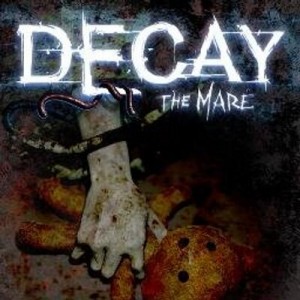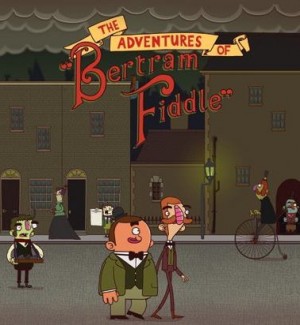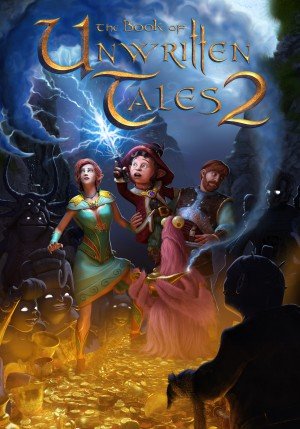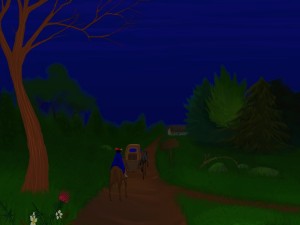25 Years with Charles Cecil - Part 1 (1990-1996) interview

Can you believe how time flies? Has it really been a quarter century since Charles Cecil, Noirin Carmody, Tony Warriner and David Sykes joined forces to found Revolution Software? Well, if you can’t imagine it’s been that long, look no further than the recently released Revolution 25th Anniversary Collection as proof. Containing ten of their finest games, this box set celebrates the enduring work of this legendary adventure development studio. It also gives us the perfect occasion to illuminate the history of Revolution in an in-depth interview with Mr. Charles Cecil himself. Charming as ever, Charles takes us down memory lane, sharing three decades’ worth of anecdotes – both the highs and the lows – from a long and distinguished career. In fact, there was so much to say that we've split the interview into two parts. Read on to learn of the earliest years of Revolution, including how the company almost never came to be.
Ingmar Böke: Charles, welcome back to Adventure Gamers. It’s really a pleasure to welcome you back after, I think it was, one and a half years since the last interview?
Charles Cecil: Yeah, absolutely!
Ingmar: And a lot has happened in the meantime, the 25th anniversary of Revolution. You know, we’re in 2016 now; Revolution was founded in 1990, so we’re a little late.
Charles: (laughs)
Ingmar: But we’re not too late for the 25th anniversary box set of Revolution games.
Charles: No, no, you noticed, you noticed. The 25th anniversary box is coming out WITHIN the 25th year, because we were founded at some point in the second half of March 1990, so therefore, we’re still within our 25th anniversary year, but yes, it might have been better if we’d been slightly earlier than this.
Ingmar: (laughs) No problem at all. But in keeping with the retrospective spirit, it would be very interesting if you’d give us an idea of the early days at Revolution.
Charles: Okay, although it might be better to go back slightly further than that. I wrote my first computer game when I was at university in 1981 for the Sinclair ZX-81 for a company called Artic Computing – possibly the first European computer games publisher. The games were later ported to the ZX Spectrum. But they were very basic text adventures – and I have to say replaying them these days on an emulator, they look really, really basic – but you know, they were popular at the time. And I was then invited to go and work as head of development for US Gold and after that, Activision.
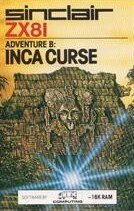 |
Charles Cecil's first game for the Sinclair ZX-81 (1981)
|
Around about 1989 the US side of Activision ran into financial trouble, while the European office was still very successful. This is obviously the pre-Bobby Kotick version of Activision; he bought it and turned it into the very successful company that it is now. But Activision was running into trouble and my boss, Geoff Mulligan, came and said “Look, we’re going to have to make you redundant, but would you be prepared to continue to work for Activision for three days a week?”. I’d been wanting to return to development and this was just the perfect opportunity. Meanwhile an industry friend, Sean Brennan, the deputy Managing Director of Mirrorsoft, had driven to Reading, where Activision was based, and had taken me out for lunch, and told me that if I wanted to set up a development company, then they would look favourably on any project that we pitched at them.
So all of these things came together, and I decided that I would set up a new development company, which we would later call Revolution. When you set up a company in the UK, you buy a shell company ‘off the shelf’. The company that I bought happened to be called Turnvale. And the village in Lure of the Temptress is called Turnvale after the name of the original company!
Ingmar: And how did you come up with Lure of the Temptress as your first game for Revolution?
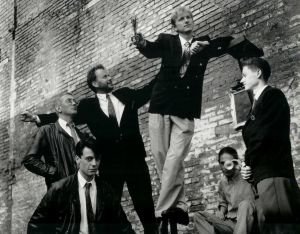 |
L-R: Revolution's Dave Cummins, Steve Oades, Charles Cecil, David Sykes, Adam Tween, Tony Warriner (Hull, 1992) |
Charles: Tony Warriner started working at Artic Computing in 1986. Tony had sent in a game he’d written while he was at school, called Obsidian, and it was really, really good, and we called him in and we were delighted that he agreed to license the game to Artic. Tony and I have stayed colleagues and friends since then. So in 1989, when I decided I wanted to start another development company, I invited him to join and he was very excited to do so. He was working at an aeronautical company called Bytron with a fellow programmer called David Sykes, and he introduced me to David, who liked the idea of writing games, and very quickly agreed that he too would join Revolution. Then shortly after that, my girlfriend at the time, Noirin Carmody, who was the product manager for Sierra and was very knowledgeable about the Sierra brand, joined as well.
Our objective was to go head to head with Sierra, because Sierra kind of felt like it was losing its way – the King’s Quest games were taking themselves very, very seriously. At the time, adventures were really the cutting-edge genre, for both graphics and, certainly, interactive narrative, and in many ways gameplay as well. And I thought that the idea of having a virtual world – a system that we called Virtual Theatre, where characters walked around and talked to each other and exchanged information – could actually work really well.
And so we came up with a design which we pitched to Mirrorsoft. I borrowed £10,000 from my mother, which was very kind of her to lend the money, and I got a personal overdraft of £10,000, so we started the company on £20,000 pounds, and rented a tiny, tiny little space above a fruit shop in Hull – Hull is a city on the east coast of England. Tony and Dave worked in this tiny little area in the freezing cold, and I remember getting a request from them – “Can we have a heater?” So I bought a really cheap gas heater, but the problem was that if they kept the window closed, then the room filled up with gas fumes.
Ingmar: (laughs)
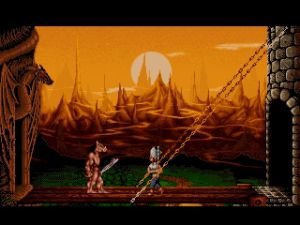 |
Lure of the Temptress
|
Charles: And so they had to open the window to get rid of the smell of the gas, which of course let the cold in. So for, I don’t know, maybe six months they worked in these terrible conditions on the basis that this was very much to write the prototype which we were going to present to Mirrorsoft. I had bought a 386 PC, of which I was incredibly proud. It was a wonderful, powerful beast; it played flight simulators incredibly well – I remember landing my jet on the aircraft carrier – and it was all flat-shaded polygons, and it just looked fantastic. This PC had cost me, I don’t know, probably close to £2000, so it was really expensive – particularly given that this was 25 years ago – and I’d given it to Tony and Dave to develop the game on, and the proviso was that when they drove down to do this presentation, that they strap this precious PC into the back seat with a seatbelt. Which they did. And they arrived and they got their stuff out, and they came in and we talked about what we were going to do and had a glass of wine.
Then the next day arrived and we had to go off and I looked out the window and saw to my horror that somebody had broken into the car. I ran down – in those days people stole car radios very regularly in London – and somebody had smashed the window and stolen the car radio, and guess what was still on the backseat?
Ingmar: Oh!
Charles: The PC! We’d forgotten to unpack it! And if somebody had stolen that PC, I doubt that we even had a back-up! Certainly, to buy another PC would have been a HUGE financial ask. So I would say that, if that PC had been stolen, there’s a very good chance that Revolution would not have existed.
Ingmar: Wow, that WAS close! But in spite of the horrible conditions your coworkers had to live with for six months, looking back at Lure of the Temptress, since this was the first project for Revolution, what lessons would you say you learned about working together as a team, about designing a game together?
Charles: Well, the interesting thing was that, because it was really still very early days in the game industry, we went looking for people who had an interest rather than any experience, and we found a couple of really talented artists locally. One, for example, was a fellow called Steve Oades, who was working as a trainee clerk, and he sent in some pixel animation, which was utterly brilliant! He joined the company and stayed for quite a few years. He was a hugely talented animator with absolutely no training. So we were taking people with a love of pixel art and putting them straight on the job, and the talented ones absolutely soared. There were plenty of bad ones who flopped.
We got together a team of about four or five people. The idea behind Lure of the Temptress, and a system that we called Virtual Theatre, was that you could string commands together, which very much came from a text adventure approach. You could select to “tell this person to…” and then you could choose all the verbs, [like] “go to”. And then you’d have a list of all the rooms you’d see, so you’d “Go to this room,” and then you could either end or “and then” for anything you could do in that room, like pull a lever or pick up an object. It was actually a very interesting system, but we found it difficult to turn into much of a game, so Lure of the Temptress sort of relied more on the humour and the fact that things moved forward as you achieved certain objectives. But I think Virtual Theatre was a pretty good system, and certainly the game got some very good reviews.
Now there’s quite a nice story about that, in that the game had been commissioned by Sean Brennan for Mirrorsoft, and the head of marketing was a woman called Alison Beasley. As we came close to completion, she phoned me up and said, “Look, we need to come up with a game name; can you give us some names?” So I came up with a load of names, I’m sure none of which were particularly good, and at the bottom I wrote “Lure of the Temptress”. I put in brackets “We can’t call it this, by the way” but she came straight back to me and said "Look, we’ve got to call it Lure of the Temptress.” And I said to her “Look, Alison, it might be a good name, but there are two problems: firstly, there’s no ‘luring,’ and secondly there’s no ‘temptress’ in the game.” So she said, “Can you put them in?”, and there was a silence, and I said “Well, I can do, but it’ll extend the [development] time, quite considerably.” And she said, “That’s fine. We are happy to wait.”
Ingmar: (laughs)
Charles: So we then rewrote the story and the game to fit the name that they liked, which in hindsight is utterly ridiculous. But what it did was extend the time that we were writing the game by about four months, which actually worked very much in our favour, because during that time the owner of Mirrorsoft, who was a newspaper tycoon called Robert Maxwell, died – he either fell off his yacht or was murdered – and it turned out that he had been raiding the company’s pension fund. And when that came to light, the authorities basically put the company into administration. It was extraordinary; it was a fantastically successful publisher that collapsed overnight.
So we checked our contract, and the contract stated – because of course, they would never expect this to happen to them – that if either party went into administration, then the rights reverted to the other party. So we suddenly found ourselves with Lure of the Temptress, the rights to a game that was almost finished, and also we’d started to work on our second project, which was Beneath a Steel Sky.
Ingmar: And Beneath a Steel Sky, of course, is another game that a lot of adventure game players absolutely admire and love, and still hope there will be a second game at some point in time…
Charles: (laughs) Which I’m sure there will.
Ingmar: That sounds excellent! But it was a very different story genre from your first game. How did you come up with the idea to go into a science-fiction – or cyberpunk, whatever you want to call it – direction? And, please tell us a little bit about the influences behind Beneath a Steel Sky.
Charles: Well, I’d read Neuromancer by William Gibson – everyone had, and I thought all the jargon was pretty nonsense. There were some ideas that kind of worked, but lots that didn’t. So, I would say that it was the antithesis to William Gibson’s Neuromancer. Now, I had just come from Ford, where I had been studying engineering, and I was very impressed by the heavy manufacturing machines – particularly as I’d been stationed in Bordeaux to work as a management trainee in an automatic gearbox factory – and so, really the beginning of Beneath a Steel Sky is just like that Ford factory with the big lathe, the press, and the ‘jobsworth’ people walking around in overalls.
The funny thing, of course, is that when it comes to designing a game you just come up with ideas that are in your head at that time. And I guess the idea of starting off in the industrial area – all I knew were the presses and the lathes of Ford, both of which went into the game. Then as we progressed, one of the things that I’m a huge fan of is [Belgian comic book series] Tintin, so we’d started referencing that – my wife had bought me a Tintin design bible – and I looked at some of the characters. [Beneath a Steel Sky’s] Danielle Piermont does bear a striking similarity to [Tintin’s] Lady Castafiore.
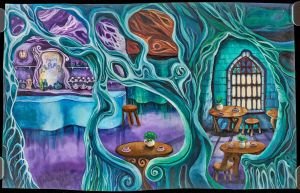 |
Early design layout for Beneath a Steel Sky |
When I was at Activision I had been speaking to Dave Gibbons about the possibility of licensing his comic book Watchmen. It turned out that we couldn’t license it, but Dave and I stayed in touch. So I thought, why not ask him if he wants to collaborate on a game? And to my delight he said that he’d love to, and very quickly the project changed its direction to incorporate Dave’s input, both artistically and creatively. We’d work together on the story and he’d draw the characters, so it was very much a partnership and it was an absolute pleasure to work with him, I have to say.
An interesting story, that I’m not sure I’ve actually said before, but I’d heard that Douglas Adams was writing a new game, which was later to be called Starship Titanic. He had written adventures for Infocom including Hitchhiker’s Guide to the Galaxy, and maybe others as well, but I phoned up his studio, and his partner answered the phone, and I made them an offer to work in collaboration, and the partner said “Well, we’ve played your games, and we admire them, but we think we can do better by ourselves, but thank you very much for getting in touch.” Starship Titanic went on to cost Douglas Adams millions and millions of pounds, and went years over schedule. To try to recoup some of the money, he then took on the film, and it’s interesting to think about what would have happened if Douglas Adams’ partner had accepted the offer -- which he really should have done, because then the game would have come in more on time and on budget, and it would have felt much more contemporary. Then our direction would have been quite different, and Douglas Adams would have not lost all that money, and who knows what would have happened?
Ingmar: That seems to be a repeating theme in the history of Revolution. I mean, we had the story with the car…
Charles: (laughs)
Ingmar: … and it’s very interesting to find out how much really depends on coincidences sometimes.
Charles: Yeah. Fate.
Ingmar: Yeah, maybe. I’m looking forward to hearing more of these stories, and maybe we can find that same pattern behind them.
Charles: (laughs)
Ingmar: I’d like to move on to Broken Sword now. I’m sure you’ve talked a lot about it in the past, but not everyone will have heard it. How was the idea for Broken Sword born?
Charles: Okay, so we were finishing Beneath a Steel Sky, and wanted to work with Virgin [Interactive Entertainment] again, so I prepared a pitch for an Egyptian game – a game set in Egypt, to do with hieroglyphs. Sean Brennan had moved from Mirrorsoft to Virgin, and we moved with him – sorry, I should have made it clear that when Mirrorsoft collapsed, Sean and a number of others went to Virgin, and we took the games and licensed them to Virgin, so we swapped to Virgin. So Virgin had published Lure of the Temptress, and were about to publish Beneath a Steel Sky and we pitched this new idea. Sean suggested that we meet at a restaurant and have dinner together – this was a restaurant, I don’t remember the name, on the King’s Road, in Chelsea, in London – and he looked at the presentation, the pitch, and said “Egyptian games don’t sell, what else?” And that kind of flummoxed me, because I spent a fair bit of time coming up with these ideas, which he’d just dismissed. And he said, “Look, I’m reading a book called Foucault’s Pendulum, by Umberto Eco, and there’s a really interesting group called the Knights Templar. They’d be fantastic anti-heroes.”
 |
Broken Sword: The Shadow of the Templars |
Now the thing about Sean is that he’s got a great eye for games and ideas. We drank lots of wine, and ate lots of great food, and talked further. I then started looking into the history, and I bought a book called The Holy Blood and the Holy Grail – which of course is what Dan Brown used for The Da Vinci Code – and while most of the Holy Blood and the Holy Grail is utter nonsense, there was some really interesting information about the Knights Templar and how they may have morphed into the Freemasons, and all of that felt reasonably authentic and well worth exploring. The book also suggested the existence of the Priory of Sion, which is just the biggest load of rubbish ever – so for Dan Brown to state that it is a fact suggests that he didn’t spend too much time doing scholarly research.
Ingmar: (laughs)
Charles: But I can tell you another story actually, which is again to do with fate; I mean it is extraordinary. A number of years later, I was canoeing down the Dordogne with my son. My wife Noirin was waiting in a beautiful little village called Carennac, and went into a little art gallery and picked up a book about the Knights Templar. The owner of the art gallery walked over and asked her in French – she speaks no French, he speaks no English, but they kind of communicated – why she was interested. She explained, and it turned out that he was a guy called Jean-Luc Chaumeil, who had actually interviewed a guy called Pierre Plantard – Pierre Plantard was the one that claimed to be the Grandmaster of the Priory of Sion! We met and drank champagne and ate saucisson and talked about the truth behind the Prior of Sion.
Ingmar: Wow, that’s fate, indeed.
Charles: That is fate. Jean-Luc had actually revealed Pierre Plantard to be a fraud many, many years earlier, so by extraordinary coincidence, in this village of 313 people, we’d stumbled on the one person in the world – the one person in the world! – who knew all about the Priory of Sion and what a load of old nonsense it was. So that was just quite extraordinary, wasn’t it?
Ingmar: Definitely.
 |
Broken Sword intro story sheet |
Charles: So that’s how it started. Another bit of serendipity was that [gaming magazine] Edge had written a piece about a college called Ballyfermot, that was producing really talented animators, and at Revolution we needed animators, so I made a plan to go out and meet with some staff there. I was met by the head of layout, a gentleman called Eoghan Cahill. Eoghan used to be a layout artist for Don Bluth Studios. I showed him some of the layouts we were planning to do, and he just burst out laughing. He said “Really those are not good enough,” and he showed me his layouts, which were stunningly good – stunningly good – so I convinced him that he should leave Ballyfermot and come over to Revolution.
He drew all the layouts for Broken Sword 1. Halfway through he teamed up with a colleague of his called Neil Breen, and from Dublin they drew these beautiful layouts. We decided stylistically that we would paint under the line, so the line would be maintained. A lot of the success of Broken Sword and the unique look, I think, rests with the excellent work that Eoghan did in creating really interesting layouts that viewed the locations from a perspective that we wouldn’t have thought possible.
One of the things – my God, he could talk the hind legs off a donkey and he would never let anything go – that he started hassling me for was whether we could change the camera angle of the layouts. And I went back and I said “Look Eoghan, of course we can’t, because the sprites are drawn at a fixed camera angle; of course you need to draw the layouts at that same angle.” So he drew a couple of layouts at different angles, and said “Can you try it, can you see?” And to our absolute amazement, we found that actually the eye didn’t worry about quite a range of layout angles despite the sprites being at a fixed angle. That meant that he could change the camera angle and create a range of emotion that we wanted to convey. Eoghan was brilliant.
I have to say that our own team at that time was also fantastic – I’ve mentioned Steve Oades; Steve continued as a sprite animator and we got some very talented background artists. And Steve Ince, who’s now very successful in his own right, came in and did a bit of art, and then did a bit of production for us, so we were beginning to build a great team at that point. Oh, I should also add that a few years earlier I’d played cricket with an Australian, a young composer called Barrington Pheloung. I’d kind of read that he was doing really well – he was writing music for television series like Inspector Morse – so I got back in touch with him and asked him if he’d be interested in writing music for Broken Sword, and he said "absolutely". I worked hard to get a really strong team – a dream team – for this particular project.
Ingmar: Did you always have the two main characters in mind – you know, the American college guy and the French girl – or did you, perhaps, have totally different ideas for the main characters at first? How were the characters conceived?
Charles: They were born from pragmatism. I thought it would be nice to have two conflicted characters that, through both friendship and conflict, could convey the exposition in an interesting way. Because the game was going to be set in Paris, one of them had to be French, of course. And then I wanted a foil. The idea of a Californian cool guy out of college, out of law, bored at his job – and a driven French photojournalist might kind of work together. And that’s where George [Stobbart] and Nico [Collard] were born.
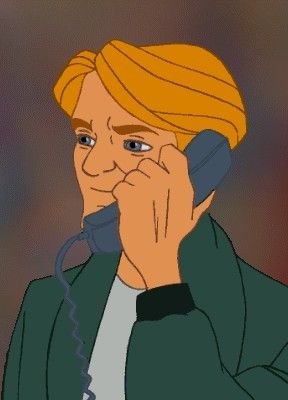 |
George Stobbart
|
Ingmar: You spent so much time with George and Nico throughout the years, and I know you’re – just like me – a huge fan of Game of Thrones. I recently read an interview with George R.R. Martin where he talked about how difficult it is for him to let go of the characters at some point. It’s a huge problem – originally he wanted to write seven books, now he’s saying perhaps there will be eight, because he can’t let go. Do you think that could be a problem for you at some point as well, because you spent so much time with the characters?
Charles: (chuckles) Well, indeed, but the difference is that Broken Sword games tend to be written every five years. So Broken Sword 2 followed Broken Sword 1 very shortly – that was 1996, 1997 – but Broken Sword 3 didn’t come out until 2003, Broken Sword 4 was, I think, 2006, and Broken Sword 5 was 2013 – so, there’s always been a significant gap. At the moment I’ve got various ideas but am not currently working on a new Broken Sword. I think the difference with Game of Thrones is that he’s probably just writing Game of Thrones and nothing else. What we’re doing is writing a range of games, and then coming back to Broken Sword. So, hopefully the new games will always feel fresh.
Ingmar: But because you spend so much time with the characters, and because you care about them deeply, having worked on them for each game and developing them as characters, I’d expect there must be a kind of personal connection. Certainly not compared to a real human being, but how would you describe your personal relationship to George and Nico?
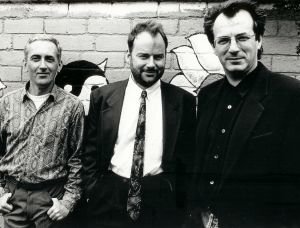 |
Dave Gibbons, Charles Cecil, and Dave Cummins (1994)
|
Charles: (chuckles) In order to write the adventures he goes on, I probably have similar interests to George. To me, Nico embodies what’s great about the archetypal French woman, in that she’s full of confidence, and strong and sassy. To be clear, while I design the missions that they go on, and I design the overall story, I don’t actually write dialogue.
Now I have the pleasure of working with Neil Richards who is a wonderful writer. Originally we had a writer called Dave Cummins, who had worked with me at Activision as a tester. Dave wrote so beautifully – I remember him writing a test report for a particular adventure, and he wrote a critique of that adventure so beautifully that it was quite clear that he was a much better writer than the writer of the adventure. So when Activision collapsed, Dave came with me to work on Lure of the Temptress, and then Beneath a Steel Sky, and then Broken Sword 1. He got very ill halfway through Broken Sword 2, so he had a lot less to do with that. Sadly, he passed away, so we don’t have the benefit of having the opportunity to work with him again, which is a great shame.
Ingmar: Mm-hmm, definitely. And one very last question about the first Broken Sword game: Do you remember one particular moment when you first realized, “Wow, this game is going to be a huge hit”?
Charles: Well, I can turn that question on its head, because the thing about adventure games is that it’s only clear towards the end – once the animation, the music, the sound effects, the finished graphics, all of those things come together – it’s only then that you can tell whether or not it’s going to work.
Virgin started getting very excited by Broken Sword as we approached completion – this was September 1996 – and the German office’s head of marketing, Martin Speiss, came over to York and said he thought it was going to do very well in Germany, and Sean was championing it in the UK. So we got very excited too. What happened in those days – because with print magazines there was a long lead time – was that publishers would give the game exclusively to a particular magazine a month before it was finished. This was on the basis that the magazine would then review it, taking into account that a load of the bugs were obviously going to be fixed. It sounds like a pretty strange system now, but that’s the way it worked.
So, a particular magazine was given an early copy of the game, and I was a little bit worried because clearly it had bugs that we were going to be fixing in the last month. The game released, and out came this magazine’s review, and they absolutely slated us! They slated us because of all the bugs – it was just absolutely awful. And of course, there was a month before any of the other magazine reviews came out. So for that month, we had absolutely no idea what to expect – was this a rogue review, or was everybody going to give it a bad review? Then the next set of reviews came through, and they were all ninety percent-plus, and we realized that we had something that could be very successful.
Then we wanted to port to PlayStation and Virgin told us that they didn’t want to publish it, so we managed to convince Sony – who, frankly, were not enormously excited at the prospect – to do it, and that got nine-out-of-ten across every single official PlayStation magazine, and most of the other magazines, and went on to sell half-a-million copies, which at that time was absolutely phenomenal for PlayStation.
Ingmar: Well, fortunately it worked, but I guess most people just needed to see the very first sequence of the game and they were in love. [Charles laughs] That’s what I remember. And I’m pretty sure a lot of other people remember exactly the same thing.
Charles: Yes, yes, no, absolutely, we were lucky. Actually we were particularly lucky to find Rolf Saxon to play George. These days, I give him the script, and talk to him about the story about a week before we’re due to record. And that pays huge dividends for two reasons: One, he can give feedback on the script, which we’re very happy to change, but secondly when we go into the recording studio, he has supreme confidence because he knows exactly what the context is. And he will help the other actors. So if other actors are unsure, then he’ll jump in to guide them. And there’s a sense that he’s very solid, he’s able to guide people, in a very gentle way. So what we had in the opening sequence to the original Broken Sword was: George’s wonderful – sorry, Rolf’s wonderful George voice; the layouts from Eoghan Cahill that were so beautifully drawn and very well coloured; and then we had the haunting music of Barrington Pheloung.
End of Part 1.
While Sierra and LucasArts were slugging it out in the United States, across the pond the little British team called Revolution had quietly created multiple gems and gained worldwide recognition by the end of 1996, establishing itself as a force to be reckoned with. Surely it would be smooth sailing for the studio from here, right? Well, not exactly, as Revolution was hit hard by the genre's dark days, clinging perilously to life before bouncing back and rising to prominence among adventure game fans once again. Tune back in tomorrow for the conclusion of my interview with Charles, as he walks us through those trials and triumphs.
Interview transcription by K.R. Parkinson.



